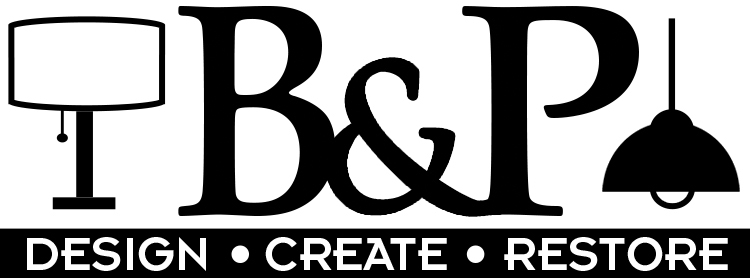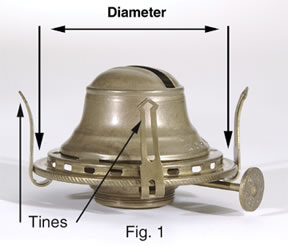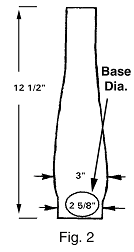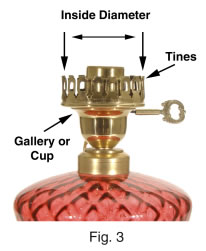|
Choosing the correct size for kerosene lamp chimney replacementLamp chimneys are, relatively speaking, fragile and must occasionally be replaced. If you have pieces of the damaged or broken chimney you may carefully place them together (taking care not to cut yourself), tape them together with scotch tape and measure for a replacement. If the remnants of the broken chimney are not available you may instead measure the oil burner itself to determine the correct base diameter for the replacement chimney (see fig. 1). The most important dimension to consider when measuring for a replacement chimney is the base diameter (see fig. 2). The base must fit correctly to insure that the chimney is held snuggly by the burner or gallery and will not fall when moved or jostled. In addition, and most important when fitting a chimney for oil or kerosene use, the chimney must “seat” correctly on the burner hardware to promote bright and efficient combustion of the lamp fuel. With the help of a glass chimney, kerosene lamp burners are able to draw the oxygen they require for combustion through perforations below the combustion chamber. A well-fitting lamp chimney augments this basic design by facilitating an “updraft” which continues through to the top of the chimney. This updraft helps to cool the metal burner and foster a steady, flicker-free flame.. If, however, a poorly-fitting chimney is used, some amount of air will invariably enter the combustion area around the wick from the bottom edge of chimney. When this happens, the flame is pushed about in a cross draft and cannot burn in a bright, steady manner. This “candle in the wind” effect, in most cases, will seriously degrade the efficiency and light output of the lamp. In sum, pay special attention to the chimney base-size and fit when replacing a lamp chimney. This fit is critical for the proper functioning of your kerosene burner. The final step in replacing your lamp chimney is to “try it on”. The best fitting chimney, when placed on the burner, will engage the tines (see Fig. 1) and cause them to bend outwardly by approximately 1/8” to 1/4” of an inch. The correct chimney height for an oil or kerosene lamp is not only a question of aesthetics but, in some cases, may determine the efficiency of the lamp burner. Generally, kerosene lamps at use in higher altitudes require taller chimneys for the most efficient combustion. Most probably though, only lamps that employ the use of “mantles” (Aladdin or Coleman type lamps) for high light output are more seriously affected in this regard than lamps that use flat wicks. Glass chimneys used on electric lamps are mostly for decoration, though some function as lampshade support. Here, a snug fit to the lamp and correct height (for aesthetic reasons) should be the main concerns. Many electric lamps that require chimneys have a gallery or “cup” type chimney holder (see fig. 3).
To choose a correct chimney for these lamps, measure the inside diameter of the gallery. Again, a correctly fitting chimney will engage the tines of the gallery or cup, creating outward pressure on the tines that, in turn, provides a firm “grip” on the chimney base. Important Note on Chimney Glass: All glass (shades,chimneys,hurricanes) will vary in thickness due to the manufacturing process. They will fit the holder/burner specified in their description. They are designed for oil lamps and meet the standard sizes and variations found in the oil lamp industry. Using chimneys outside the oil lamp or kerosene lighting purpose is up to the consumer but they should be aware of the size variences. Frequently Asked Questions - How tall does my chimney need to be?To look well balanced and proportionate, we think a chimney should extend from about 3” to 4 ½” above the top the shade on a full sized lamp. If your lamp sets on a table and has a burner or adaptor then it probably requires a lamp chimney. For choosing the correct chimney height for your lamp’s glass shade, the following chart should be helpful. First measure your glass shade if you already have a shade. (If you are buying a shade, refer to the fitter or the diameter information given in the product’s description.)
|







